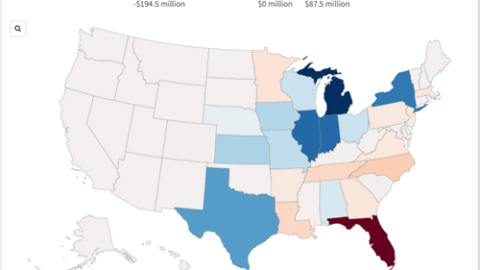
European Food Safety Authority reaffirms that BPA uses for food are not safe. Where is FDA?
Tom Neltner, Senior Director, Safer Chemicals, and Maricel Maffini, consultant
What Happened?
Today, the European Food Safety Authority (EFSA) finalized its Re-evaluation of the Risks to Public Health Related to the Presence of Bisphenol A (BPA) in Foodstuffs report. After considering public comments on its November 2021 draft, the agency reaffirmed its conclusion that Europeans of all ages are exposed to BPA at levels 100 to 1,000 times greater than EFSA considers to be safe.
Why It Matters
EFSA found that consumers’ dietary exposure should be less than 0.2 nanograms of BPA per kilogram of body weight per day (ng/kg-bw/day) to protect their immune systems from harm.1 Although EFSA didn’t analyze the reality for U.S. consumers, we used FDA’s 2014 estimated dietary exposure for BPA (the most recent available) to calculate that Americans’ exposure is 1,000 times greater than what EFSA deems safe.
Our Take
EFSA’s analysis is primarily based on scientific evidence that FDA had not considered in previous reviews. With the final report in place, EFSA has completed a rigorous, transparent, and comprehensive risk assessment. FDA now has no excuse for delaying action on a food additive petition submitted by EDF and our partners that the agency agreed to consider on May 2, 2022. That petition requested that FDA revoke its approvals for using BPA in adhesives and can coatings and set strict limits on using it in plastic that contacts food. FDA has not yet responded.
EFSA’s Conclusions
EFSA found that extremely low exposures to BPA can lead to an overactive immune system producing out-of-control inflammation. BPA was also associated with disrupting the endocrine system, harming reproduction, and reducing learning and memory. The immune system was most sensitive to BPA exposure.
After calculating a safe level of BPA—known as TDI (tolerable daily intake)—that would prevent anticipated harm, EFSA compared it against the estimated dietary exposure of the European population. The agency concluded that “both the mean and the 95th percentile dietary exposures in all age groups exceeded the TDI by two to three orders of magnitude.”
Putting BPA New Safe Level in Context
EFSA’s safe dose of 0.2 ng/kg-bw/day is extremely low. It may be useful to compare it to exposure from drinking water. For an adult weighing 120-pounds who drinks 2 liters of water a day, it would take only 1.2 parts per trillion of BPA to exceed the safe level.2
Next Steps
We will press FDA to act with greater urgency on our overdue petition. We are also looking at whether there is increased risk to communities near where BPA is made or processed.
NOTES
1 The limit was 0.04 ng/kg-bw/day in the draft EFSA report.
2 0.2 ng/kg-bw/day * 60 kg / 2 liters = 1.2 ng/L = 1.2 ppt. This does not account for other sources of BPA in the diet.












